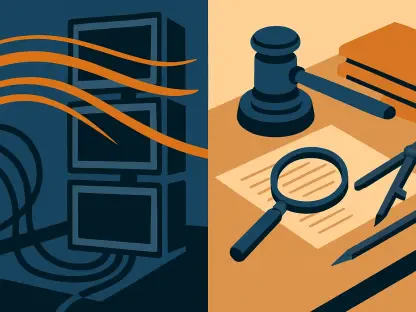Over the past few decades, the housing market has seen an almost astronomical rise in house prices, a trend that can be likened to a rollercoaster journey through economic ups and downs. This monumental escalation, observable in the housing market graph over the last 50 years, has captured the attention of both potential homeowners and seasoned real estate investors. Real estate remains pivotal in wealth creation and preservation, a notion strongly endorsed by investors like Marco Santarelli. Despite the challenges posed by taxes, inflation, and market fluctuations, real estate provides a unique opportunity to amass enduring wealth, not just in terms of money made but money retained. This article delves into housing market trends, shedding light on the factors that have contributed to the sustained increase and how self-directed IRAs present a strategic approach for maximizing returns in real estate investment and planning for financial independence.
1. Historical Context: House Prices and Economic Resilience
To grasp the magnitude of the upward spiral of house prices, it’s crucial first to delve into the historical context from which these trends have emerged. Over the past thirty years, from the 1990s to now, the U.S. housing market has experienced a notable series of shifts. The U.S. House Price Index reveals an impressive average annual growth of approximately 4.63% until the present, which marked a notable peak in house value appreciation in July, just a few years ago. This growth trajectory didn’t occur in isolation but rather against the backdrop of several pivotal economic events and policy decisions. The economic resilience post the early 1990s recession played a critical role. Technological advancements and globalization added fuel to the economic growth engine, fostering an environment where consumer confidence soared alongside increased job opportunities and disposable income. As people began to prioritize homeownership during these economically buoyant times, it triggered upward pressure on house prices.
Moreover, inflation continually influenced purchasing power, nudging house prices upwards. For instance, a significant spike in property values was reported during 2021, according to the Case-Shiller U.S. National Home Price Index. Simultaneously, interest rates were on a historic low during the early 2020s, largely due to the Federal Reserve’s measures to stimulate the economy amidst the global pandemic, making mortgages affordable for more homebuyers. The 2008 financial crisis serves as a notable episode in explaining fluctuations where reckless lending practices led to a crash, influencing housing prices temporarily.
- Self-Directed IRAs: A Pathway to Real Estate Profits
Self-directed Individual Retirement Accounts (SDIRAs) have emerged as a notable financial vehicle for real estate investors seeking to broaden their portfolios and capitalize on the lucrative potential of real estate investments. A self-directed Individual Retirement Account (SDIRA) offers account holders the empowerment to make informed decisions about their investment strategies. Unlike traditional IRAs, self-directed IRAs unlock multiple alternative investments, including real estate, private equity, and commodities, within a retirement plan—an array beyond the confines of the typical stock and bond options. This empowerment allows investors to strategize according to their expertise, paving the way to enhance their investment portfolios and accrue potential wealth in a tax-advantaged manner.
Investing in real estate via self-directed IRAs allows investors to harness retirement funds without triggering taxes or penalties on invested or earned profits. The proceeds and investment appreciation remain tax-free or tax-deferred until they are withdrawn during retirement. The dynamic nature of self-directed IRA plans makes them more lucrative, as they offer broader investment opportunities compared to conventional IRAs. This broader range of investment opportunities includes alternative assets, extending beyond the scope of traditional financial products. Such flexibility allows investors to navigate complex markets with greater potential for higher yields, albeit with an enhanced understanding of the rules and restrictions that guide these investment vehicles, such as compliance with IRS guidelines for IRA investments.
1. The Benefits and Challenges of Self-Directed IRA Real Estate Investments
Self-directed IRAs present real estate investors a distinct advantage over traditional IRAs by offering various features tailored to maximize investment potential. Diversification is one of the standout benefits of using a self-directed IRA for real estate investments. Unlike traditional IRAs that primarily consist of stocks, bonds, and mutual funds, an SDIRA enables investors to incorporate tangible assets like residential and commercial properties. Such diversification can stabilize a portfolio and provide a buffer against market fluctuations. Additionally, the potential for significant returns in real estate, often surpassing those of conventional investments, is a compelling reason for investors to consider real estate through an SDIRA. This potential for increased returns is particularly evident in properties that appreciate over time while generating consistent rental income.
However, the higher returns come with a corresponding level of complexity and risk. Investors need to understand that real estate transactions through an SDIRA are not without complications. Legal requirements include the prohibition of personal use of property, restrictions on transactions with disqualified individuals, and the requirement to employ non-recourse financing agreements. These regulations are designed to ensure compliance with Internal Revenue Service guidelines and avoid hefty tax implications.
The costs associated with investing in real estate through an SDIRA can also be significant. Potential expenses include property purchase prices, financing fees, maintenance, and management costs. Furthermore, investors need substantial funds to cover ongoing expenses, particularly if a property remains untenanted for a time or requires urgent repairs. Non-compliance with the myriad restrictions governing SDIRA real estate investments could lead to considerable tax penalties, further complicating the financial landscape for inexperienced investors.
While these investments come with challenges, they offer notable benefits like diversification and control. The ability to directly manage and influence an investment portfolio can attract those with real estate knowledge, keen to apply their expertise. Real estate, as a physical asset, offers a sense of security due to its tangible nature, providing a stable investment that serves as a safeguard against inflation. Furthermore, properties often hold the potential to appreciate, potentially generating higher-than-average returns compared to traditional investments. This blend of benefits positions self-directed IRAs as a strategic vehicle for those seeking an alternative route to achieving long-term financial goals through real estate investment.
2. Maximizing Returns: Self-Directed IRA Strategies and Considerations
A key strategy for successful real estate investment using a self-directed IRA is early involvement and strategic planning to bolster wealth generation and secure a financially stable retirement. One effective method of maximizing returns is through a Roth self-directed IRA, which provides a unique tax advantage. By paying taxes at the time of contribution, investors are relieved from taxation at withdrawal during retirement. This tax-free status can substantially increase returns, as any profits generated from real estate investments remain tax-exempt, placing more earnings directly into the account holder’s pockets. Hence, choosing a Roth self-directed IRA can be a powerful tool to maximize returns and achieve financial freedom. However, investors must also be prepared for the additional responsibilities and legal stipulations associated with SDIRA investments.
There is more to success than simply understanding the possibilities offered by self-directed IRAs. Keen real estate investors must be informed of the specific rules and regulations that govern such investments to ensure compliance and avoid potentially heavy tax penalties associated with prohibited transactions. Awareness of these legal frameworks is crucial in strategizing and making sound investment decisions.
Interest in alternative investments through self-directed IRAs could lead to fresh opportunities with property types suitable for IRA purchases. Options range from single-family homes, multi-family units, condominiums, and commercial properties to mobile homes, raw land, and farm/agricultural land. While diverse, each potential investment option requires rigorous due diligence, market analysis, and aligning with IRS guidelines to optimize both financial benefits and compliance.
3. Legal Aspects of Investing in Real Estate Using an SDIRA
Engaging in real estate investments with a self-directed IRA necessitates a careful understanding of its associated legal considerations. There are important restrictions and requirements that are unique to such investment strategies. One of the primary legal constraints is the prohibition of transactions considered as self-dealing. Specifically, the plan owner or trustee cannot exploit the property for personal gain, nor can family members such as ascendants, descendants, and spouses engage in self-dealing transactions. Violations of these rules can lead to significant tax penalties, including disqualification of the IRA itself, making compliance an absolute necessity.
An SDIRA can only utilize non-recourse financing methods for property acquisitions, ensuring that account holders avoid any potential personal liabilities associated with defaulting on loan obligations. Under non-recourse financing, the property itself serves as collateral, and the lender cannot claim personal assets as collateral beyond the property being financed in the event of default. While this mitigates personal risk, it may result in higher interest rates or down payment requirements. All transactional costs associated with purchasing property using the SDIRA must be paid from the account itself, and income generated must return to the account, maintaining the tax-advantaged status of the investments.
Ownership and legal considerations also diverge from traditional real estate investments. Under an SDIRA, the account—not the individual—maintains ownership of the property, dictating a necessity for careful execution of legal documents in the IRA’s name. The nuances of self-directed IRA real estate investments demand informed decision-making from account holders who are accountable for understanding pertinent IRS guidelines and executing investments in a compliant manner.
4. Exploring Real Estate Options with Self-Directed IRAs
Self-directed IRAs open doors to an extensive range of real estate investment options, each filled with unique potential. Through SDIRAs, investors can purchase and manage a variety of property types without incurring immediate tax liabilities. This feature allows for multiple transactions and reinvestment of profits, enriching the retirement portfolio. Traditional residential properties, multi-family units, commercial properties, farm land, and raw land are just a few options available to diversify IRA holdings. Unlike conventional accounts, self-directed IRAs enhance the portfolio with tangible real estate assets, providing a buffer to mitigate stock market volatility and foster long-term financial security.
One of the significant advantages of incorporating real estate into an IRA is the tax efficiency. Since the proceeds and capital gain remain deferred or potentially tax-free until distribution, an investor can maximize returns by reinvesting or redirecting the accumulated wealth into new property acquisitions. With meticulous planning, the financial opportunities through SDIRAs can significantly contribute to wealth accumulation by leveraging property appreciation, rental income, and strategic reinvestments. Including real estate in an IRA strategy positions investors to reap the benefits of real estate’s tangible nature while adhering to optimal tax strategies.
Furthermore, incorporating real estate under a Roth self-directed IRA offers unparalleled advantages. Pre-paying taxes at contribution accrues the investor tax-exempt distributions upon retirement, allowing them to fully absorb and capitalize on investment returns. This structure allows investors to amass wealth without the ongoing burden of annual taxes on gains, aligning perfectly with a retirement vision based on financial freedom and long-term security. Equipping investors with pathways to explore non-traditional real estate opportunities, SDIRAs offer an investment advantage beyond familiar horizons, enriching the strategy with tangible assets that yield impressive returns.
5. Strategic Steps to Real Estate Investment with Your IRA
Embarking on real estate investment through an IRA involves strategic steps aimed at optimizing the retirement portfolio’s potential. Initially identifying a truly self-directed IRA custodian, unlike conventional banks or brokerages, sets the foundation for a financially beneficial mechanism that supports diverse investments. Such custodians do not earn commissions on real estate transactions and enable account holders to exercise control over investment decisions, providing the freedom necessary for astute decision-making. Selecting a reliable custodian with transparent service fees but without hidden profit-sharing preserves the integrity of the investment process.
Subsequent steps involve funding the self-directed IRA account. This can be accomplished through contributions from earned income, rolling over previous employer’s retirement savings, or transferring existing IRA assets into the newly established self-directed account. Each method ensures the tax-advantageous nature of the IRA remains intact, bypassing penalties or taxes during the transfer process, thereby securing the capital needed to embark on real estate investments.
The culminating step is the actual real estate acquisition—a process that firmly establishes the IRA as the legal owner of the property. Conducting due diligence through consultations with the custodian, investors are equipped to acquire residential or commercial properties to enrich the SDIRA portfolio and generate wealth. Management of such properties involves directing transaction costs from the IRA and ensuring rental or lease income returns directly to enrich the account. Through strategic steps, a self-directed IRA transforms from a traditional retirement tool to a dynamic investment mechanism, exploring tangible assets with the potential to revolutionize wealth accumulation.
Conclusion: Navigating the Path to Financial Freedom
Over the past three decades, the U.S. housing market has undergone significant changes. From the 1990s to the present, house prices have consistently risen, with the U.S. House Price Index documenting an average growth rate of about 4.63% annually, reaching a noteworthy peak in recent years. This trend hasn’t evolved in isolation but has been influenced by various economic factors and policy decisions. After the early 1990s recession, the economy’s recovery set the stage for this growth. Technological advancements and globalization contributed to economic expansion, leading to heightened consumer confidence, more job opportunities, and increased disposable income. Such conditions spurred a heightened demand for homeownership, pushing prices upward.
Inflation has also played a role in driving house prices higher. For example, 2021 saw a significant surge in property values, as indicated by the Case-Shiller U.S. National Home Price Index. At the same time, historically low interest rates in the early 2020s, due to Federal Reserve policies aimed at stimulating the economy during the pandemic, made mortgages more accessible. The 2008 financial crisis, characterized by reckless lending, temporarily disrupted housing prices.
In contrast, Self-directed Individual Retirement Accounts (SDIRAs) have become appealing for those looking to invest in real estate. SDIRAs empower investors by allowing them to diversify beyond traditional stocks and bonds, embracing alternatives like real estate and private equity. These accounts offer tax advantages, where proceeds and growth are tax-free or deferred until retirement, attracting investors eager for flexibility and higher returns. While offering broader investment choices, SDIRAs require a keen understanding of IRS rules to ensure compliance.









